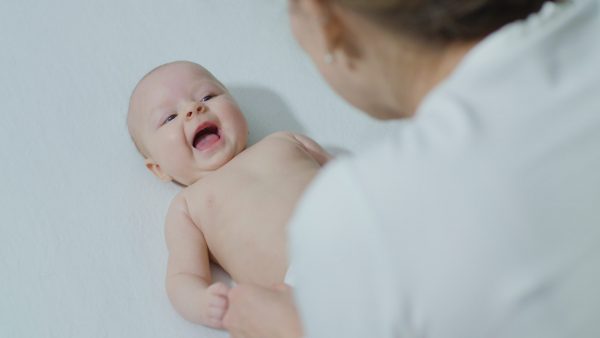Many mothers observe problems when breastfeeding their babies, leading to a stop in nursing and a shift to infant formula as a substitute. However, it is well known that nursing babies has many benefits for the health of both child and mother and is very important for building emotional contact. In some cases, a tongue-tie can reduce the movement of the tongue and make it difficult to nurse the baby. In about 10% of the newborns, doctors will cut the tongue-tie to allow easier breastfeeding, says Torben Lildholdt, medical specialist in Ear, Nose and Throat (ENT) at the specialist private practice in Horsens. Cutting might help nursing if a tongue-tie causes troubles in breastfeeding. However the number of tongue-cuts has doubled in recents years both in Denmark and other western countries. The reason for this is not known and this applies for many aspect of the diagnosis and treatment of tongue-tie. The cutting of the tongue-tie hurts the baby and cost money for societies. Considering that other problems may be the basis of breastfeeding problems, there are many reasons for developing a more thorough understanding of the biodynamics and the forces that apply in breastfeeding.
The Partners find each other
The ENT specialist Torben Lildholdt addressed SDU RIO, the research organization of the University of Southern Denmark. They can be contacted if one has an idea for development and research and search for a researcher at SDU. SDU RIO brought Torben into contact with Associate Prof. Serguei Chiriaev.
Serguei Chiriaev is researcher at the Mads Clausen Institute, NanoSYD, SDU in Sønderborg. He is a physicist and has broad experience in sensor technology and the understanding of biomechanics, relevant in breastfeeing.
Torben explains to him what he observed and how important it is to be able to measure the function of the tongue of the babies. If able to measure the babies tongue-function when breastfeeding it is possible to decide diagnostically which babies will benefit from a tongue-cut. Still, there exist no device that can measure babies capabilities in sucking.
The problem seems solvable from the technical point of view, and thanks to the project Access and Acceleration, Serguei can invest the time to look into the topic closely and has developed prototypes for early trials on babies in the ENT-clinic in Horsens.
Next steps
Different sectors work together with SDU and Torben Lildholdts team. Collaborators are hospitals (units for mother and child), health nurses and other ENT-clinics have been incorporated in the development of the device. The cooperation has existed for more than a year now. In the future the collaborators will test the measurement device in clinical trials. This phase has received recognition and possible funding from Danish Regions, Foundation for research and delevopment in Specialist private practices.
SDU RIO investigates the possibilities for a patent application. It is also necessary to apply for more funding in order to develop the device further. The aim is to develop an easy-to-use device that objectively analyses the biodynamics of the mouth of babies during breastfed.
It is very satisfying for a group of researchers to try solving a worldwide issue that has existed in society for long.
During the first year of cooperation, the partners built a trustful relationship and learned to value the abilities of each other. Now it is important to find further funding to continue with the promising ideas.


